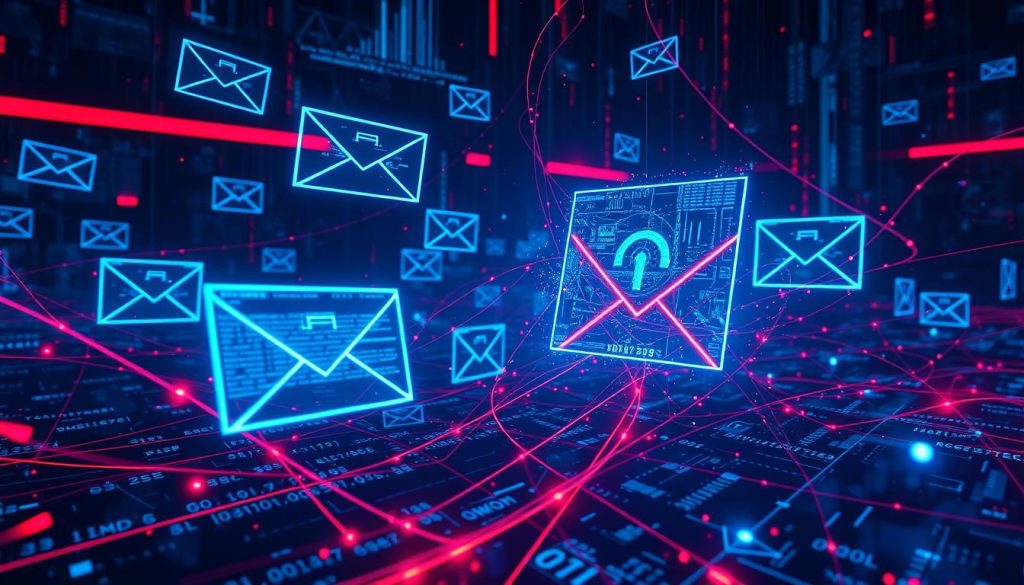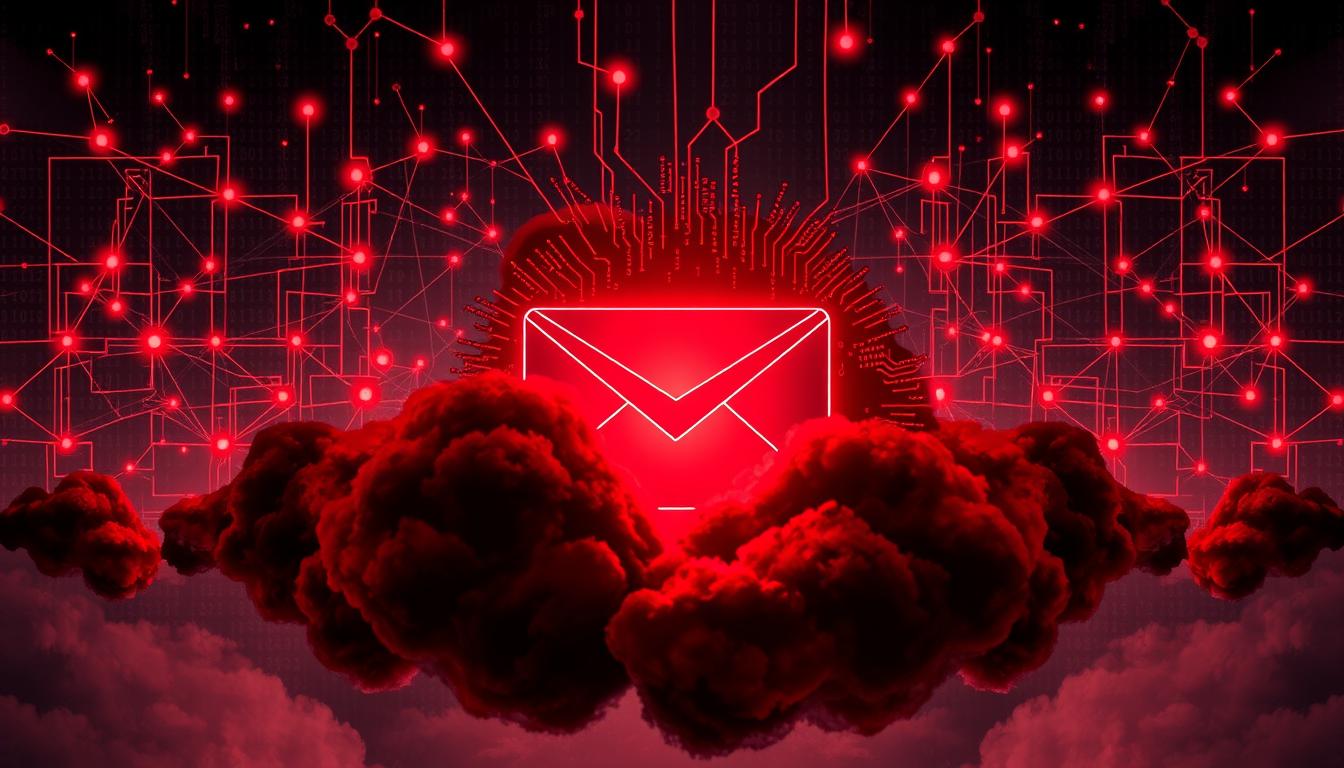Gmail Security Warning For 2.5 Billion Users—AI Hack Confirmed has caused worry worldwide. Google’s Gmail is facing a big threat from smart hacking tools. These tools aim to get into private accounts.
Experts say hackers are using smart learning to get past security. This means we all need to act fast to keep our Gmail safe. Gmail is key for many of us to talk and share every day.
Key Takeaways
- Gmail Security Warning For 2.5 Billion Users—AI Hack Confirmed highlights urgent cyber risks.
- AI-driven hacking tactics compromise passwords and sensitive data.
- Protective measures reduce exposure to phishing attempts and malicious links.
- Ongoing investigations reveal the growing complexity of AI security gaps.
- Regular updates and strong authentication strengthen account defenses.
Overview of the Latest AI Cybersecurity Breach
Criminal groups now use artificial intelligence for bad things. They make their attacks better with machine learning. This makes it hard for old ways to stop them.
They use smart algorithms to guess where to attack. These algorithms also watch how people act. This shift shows we need new ways to protect ourselves.
IBM Security experts say AI attacks are a big problem. They say security teams need to change fast.
Companies try hard to keep data safe. But sometimes, just updating isn’t enough. They need to be ready to act fast when something bad happens.
Some say we should make our systems smarter. This way, we can keep up with the hackers.
| AI Method | Description | Potential Impact |
|---|---|---|
| Automated Phishing | Generates realistic emails that trick users | Breaches sensitive information |
| Predictive Malware | Anticipates security gaps | Bypasses standard antivirus solutions |
| Deepfake Attacks | Manipulates audio and video content | Leads to false authorization and identity theft |
Gmail Security Warning For 2.5 Billion Users—AI Hack Confirmed
Reports show a new threat to Gmail accounts. Hackers use smart tech to get past usual guards. This puts your private stuff at risk.
Immediate Impact on Gmail Users
These hacks can hurt your money and privacy. Bad guys might get your passwords or change them. This could ruin your good name and hurt your friends.
Key Steps to Address the Threat Right Now
Start by changing your passwords often. Also, watch for strange login alerts. Turn on security alerts to catch bad logins. Block emails with weird links or attachments. Being careful keeps your emails safe.
Official Statements and Future Projections
Google says to use extra checks right away. Experts think hackers will get smarter. Governments want tech and security teams to work together to stay ahead.
| Risk Factor | Protective Measure |
|---|---|
| Phishing Schemes | Scrutinize links and incoming messages |
| Data Extraction | Enable two-factor authentication |
| Suspicious Apps | Limit third-party email access |
How Hackers Are Exploiting Email Vulnerabilities
Cybercriminals use many ways to get into email services. They aim for personal and business data. Some use AI cybersecurity breach to make attacks faster and bigger.
They look for weak spots and old systems. They try to sneak past filters to get to private info. As technology changes, email becomes a top way for hackers to get in.
Common Techniques Used by Attackers
Deceptive links are sent to trick people into sharing passwords. Hackers also try many passwords to get into accounts. Old software and weak encryption let hackers in quietly.
AI’s Role in Enhancing Hacking Efforts
Machine learning helps hackers by finding hidden weaknesses. It makes fake emails that look real. This makes hackers better at finding and using weaknesses.

Case Studies of Real-Life Breaches
Many email services have been hit by smart attacks. Microsoft said unknown groups took over admin controls. IBM faced attacks on staff emails that tested their defenses.
| Method | Technique | Impact |
|---|---|---|
| Phishing | Deceptive Links | Credentials Stolen |
| Brute Force | Password Attacks | Unauthorized Access |
| Outdated Systems | Unpatched Software | Data Leaks |
Phishing Attack Awareness and Prevention
Phishing is a big problem online. It uses fake logos and urgent messages to trick people. Attackers want your personal info or for you to click bad links.
Knowing how to spot phishing helps keep your email safe. Here are some things to watch out for:
- Strange email domains that look like real ones
- Generic greetings that don’t say your name
- Links that don’t go to places you know
Being careful online makes you safer and more confident.
Using strong security and staying alert is crucial. Always check who sent the email and where links go. This helps avoid problems.
| Indicator | Recommended Action |
|---|---|
| Suspicious Domain | Verify spelling and legitimacy |
| Odd File Attachments | Scan before opening |
| Unusual Urgent Tone | Pause and confirm details |
Strengthening Your Online Security Measures
Keeping your data safe is a big job. But, small steps can help a lot. Being alert is the first step to a safer online world.
Experts say to be proactive. This means adding extra steps, changing passwords often, and spotting bad content. These steps are key to keeping your data safe.
Multi-Factor Authentication Explained
Adding extra checks helps keep hackers out. You might need a code from your phone or a scan of your face. Using these extra steps can stop hackers.
Importance of Regular Password Updates
Old passwords can be weak. Changing them often helps keep your account safe. Just a small change, like swapping a letter, can make a big difference.
Recognizing Malicious Links and Attachments
Be careful with emails that seem too good to be true. Emails from unknown senders or asking for urgent action are often scams. Being aware helps you avoid these dangers.
IBM Security warns, “Failing to evaluate an unexpected email is a chief catalyst for data theft.”
| Security Action | Primary Benefit | Implementation Level |
|---|---|---|
| Enable MFA | Stops unauthorized logins | Easy |
| Update Passwords | Reduces long-term hacking risks | Moderate |
| Scan Links | Prevents virus downloads | Simple |
Effective Data Breach Prevention Strategies
Data breaches can really mess up our day and hurt trust. We can stop this by being ready. One way is to use segmented network access. This means we split our systems into smaller parts.
This makes it harder for hackers to move around if they get in. Also, making backups regularly is like having a safety net.
Using encrypted messages keeps our secrets safe. It makes it hard for others to listen in. Strong passwords and clear rules help keep out unwanted visitors.
Online security is not just about emails. It’s about keeping all our private data safe. Regular checks of our rules help us stay on track and avoid security holes.
- Keep backups on reliable servers or external drives
- Encrypt vital files for safe data exchange
- Restrict user access to critical systems
| Strategy | Function | Outcome |
|---|---|---|
| Data Backups | Regularly store copies of files | Prevents permanent data loss |
| Network Segmentation | Partition systems into separate domains | Limits breach impact |
| Encryption | Scrambles information at rest and in transit | Hinders unauthorized access |
What This Means for Cybersecurity News Updates
New threats are making everyone act fast online. Experts and big tech companies are working hard to stop data breaches. They want to keep emails safe from bad guys and help users stay safe too.
Ongoing Research and Technological Responses
Teams from schools and companies are getting better at using machine learning. They find new ways emails can be used badly. Tools with deep analytics spot and stop bad attempts.
Collaboration fosters groundbreaking advances in threat detection, stated a team from MIT’s cybersecurity research division.
Collaboration Across Tech Platforms
Big names like Google, Microsoft, and Apple are working together. They share info to keep user data safe. This teamwork helps make sure everyone’s communication is secure.
Future Outlook for Secure Email Protocols
New ways to check who you are and better ways to manage keys might come. Experts think these changes will make the internet safer for everyone.
Conclusion
New threats come up as tech gets better. Hackers use AI to make attacks quicker and sneakier. To stay safe, keep your email habits fresh and check your devices often.
Change your passwords and watch out for odd messages. Sharing security tips with others helps too. This is because hackers often target group emails.
Experts say to keep up with cybersecurity news. This helps you know about new dangers. New research leads to better tools to catch threats, but being aware is most important.
Listen to your gut to avoid attacks. Watch for anything strange and never give up. Taking steps to protect yourself and learning more keeps you safe online.
FAQ
What makes the Gmail Security Warning For 2.5 Billion Users—AI Hack Confirmed so urgent?
This warning is urgent because hackers use smart AI to attack email systems on a huge scale. It shows we need to stop cyber threats fast. It’s important for everyone to watch out for email attacks.
How does AI cybersecurity breach technology affect email security best practices?
AI helps hackers make phishing attacks better and steal passwords faster. To fight this, we need to use stronger passwords and be careful with links. We also need to use extra security steps.
What steps should I take for securing email accounts following this warning?
First, change your Gmail password and turn on two-step verification. Check your account for any strange logins. Also, watch out for phishing by looking for odd attachments or sender names.
Why are phishing attacks still so successful in compromising online security measures?
Phishing works because people make mistakes and trust too easily. Even with better filters, hackers keep finding new ways. We need to stay alert and use strong security to fight phishing.
What role do data breach prevention strategies play in safeguarding Gmail accounts?
Good strategies include more than just new passwords. They include regular checks, encrypting files, and keeping up with security news. Using Gmail’s built-in security and these steps helps protect your email from AI threats.

Leave a Reply